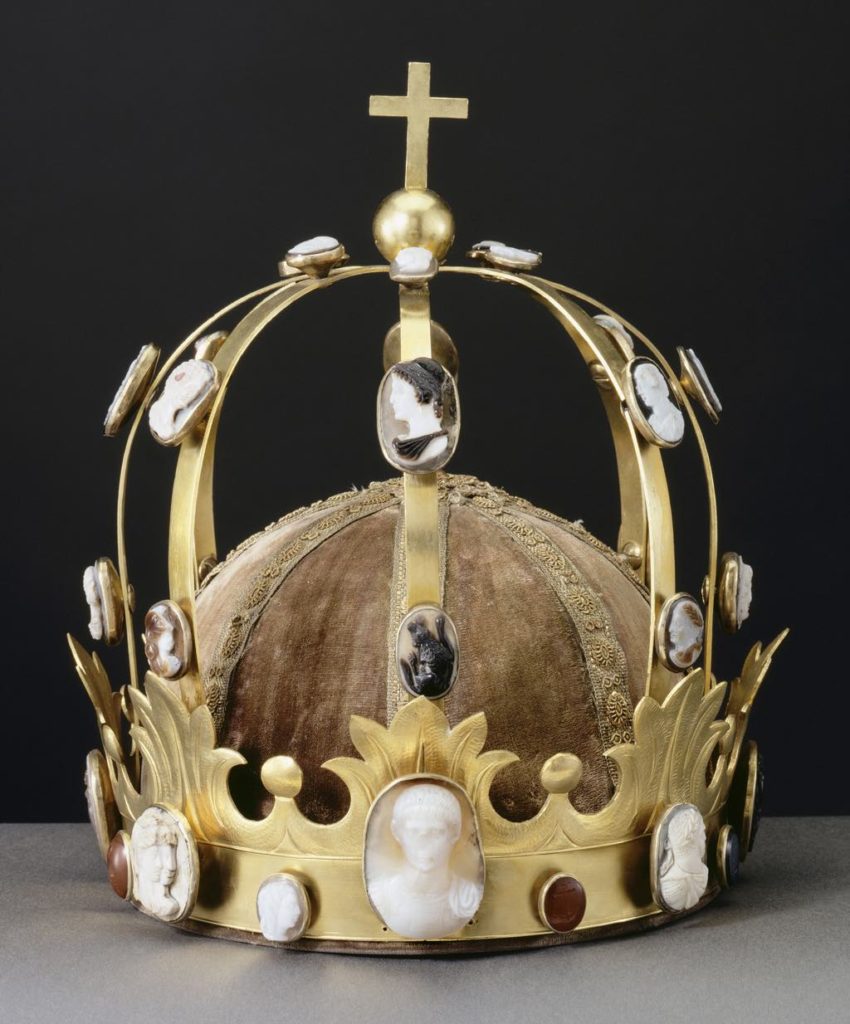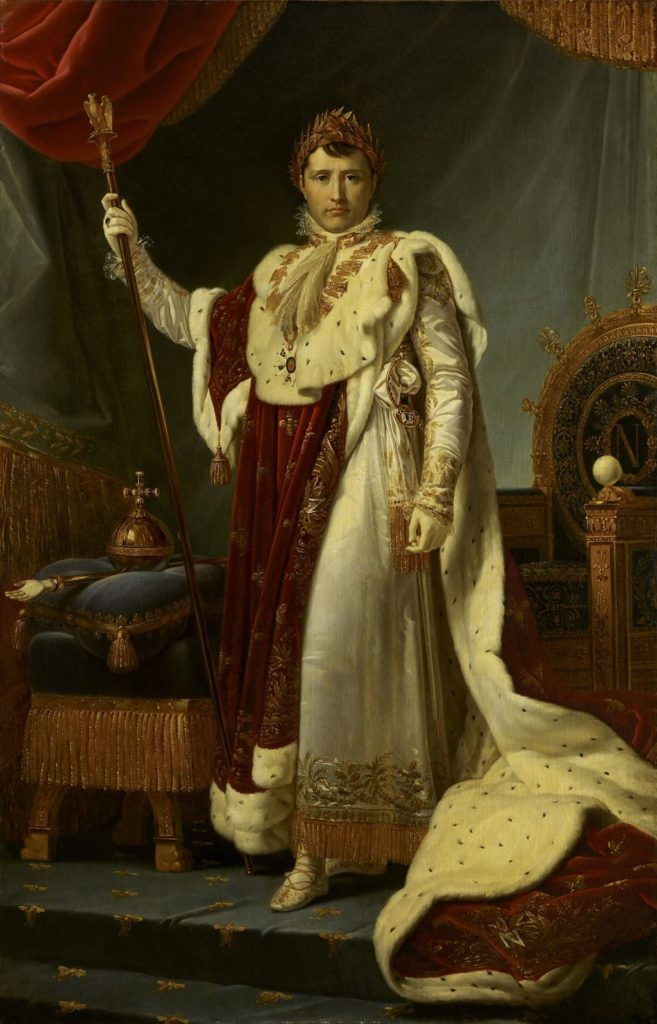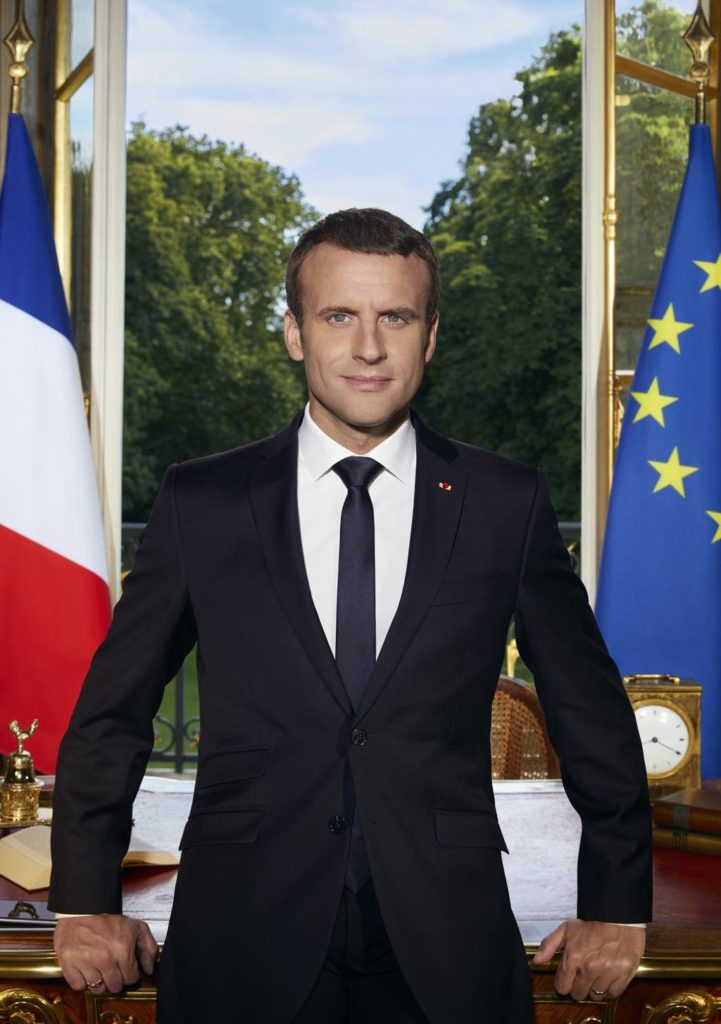
Say what you will about megalomaniac dictators and authoritarian states, but without them much of the great art we revere would not exist. An exhibition at the Louvre, “Théâtre du Pouvoir” (“Power Plays”) amply demonstrates with works from French collections how the powerful have used art as propaganda and to strengthen and legitimize their power.
Louis XIV and Napoleon were geniuses at self-aggrandizement through art, but they certainly weren’t the only ones. The first section of the show presents Philippe de Champaigne’s 1635 portrait of Louis’ father, Louis XIII, in which he is being crowned by an allegorical Victory.

Things didn’t work out so well for a later Louis, the XVI – even though he had himself painted in 1789 by Antoine-François Callet draped in ermine-trimmed robes in a hieratic pose, he still looks rather wimpy. In contrast, Napoleon, painted by François Gérard in similar robes and in a similar pose in 1805, is a picture of steely-eyed determination (a visit to Jacques-Louis David’s “The Coronation of Napoleon” in Room 75 on the first floor of the Denon Wing is a must after seeing this show).
A much more human vision of power can be seen in El Greco’s “Saint Louis, King of France, and a Page” (1541). Although the French King Louis IX, known as Saint Louis (1214-1270), is depicted in armor with the attributes of power, including a crown and sceptre, his melancholy expression and the small boy at his side give the painting a tenderness rare in royal representations.
Once the French Revolution rid the country of kings and emperors, the new regime in turn had to legitimize itself with such works as François Rude’s representation of Liberty in “Le Génie de la Patrie” (c. 1833-36).

The origins of these representations of power in Antiquity have not been forgotten. An exquisite piece of jewelry (874-850 B.C.E.) in solid gold and lapis lazuli associates the Egyptian King Osorkon II with the family of the god Osiris. A leaf of the Barberini Ivory shows Emperor Anastasius (491-518) or Justinian (527-565) in triumph, surmounted by the glorification of Christ. The lost right half of this diptych depicted the monarch being crowned by Victory, as in the portrait of Louis XIII mentioned above.
The show winds up with images of modern-day would-be monarchs, including the official portrait of Emmanuel Macron, in which the French president stands in front of his desk, his hands gripping it, with a determined expression on his face. He looks as if he is about to leap right out of the photo and attack the problems of the world. His trappings of power? A book opened to a particular page he carefully selected himself (as shown in a making-of video), an antique clock and inkstand, and a cellphone! The Legion of Honor is pinned to his lapel, and behind him are the French and European flags and the trees in the garden of the Élysée Palace, seen through the open window.
The exhibition is being held in La Petite Galerie, where small thematic exhibitions of works from the museum’s collection are shown to offer visitors a kind of key to understanding artworks. There are also suggested follow-up itineraries through the museum to help intimidated visitors make sense of it. Click here for a virtual visit to the show.
Favorite
